How often do we think about how we inhale or exhale?
What would happen if we could exhale a sneeze only once but as strong as thirty sneezes? An elephant can. Or what if we could inhale with a force equivalent to twenty toilets flushing at the same time, but in 1.5 seconds? An elephant can.
Welcome to the incredible lung pressure along with expanded nostrils of an African elephant’s trunk with that unbelievable breathing! The inhalation speed can be equal to a 300mph bullet train! Those nostrils increase trunk volume by 64% which acts like a trunk to store six quarts of water. The African elephant excels (or exhales) with breathing!
Perhaps it’s no surprise then that an elephant trumpet reaches 110 decibels, equal to a jet flying above at 100 feet. Trumpeting can be linked to excitement, play, surprise, as an alarm, or a cry for help. While trumpeting comes from pushing air through the trunk, more than 30 calls of rumbles, roars, etc. derive from the larynx.
With that amazing exhalation speed, an elephant in the Congo waded into a river, lowered its trunk into the water and forcefully exhaled. Water shot up like a small dynamite blast. It repeated blowing jets of air into the river bed to break up the sediment. That “mining” action released salt and other minerals into the water for the elephant to easily drink those nutrients.
Let’s continue to uncover more fascinating functions. Remember from Part 1, linked below, that scientists state the sense of smell is the most developed sense.
We are all familiar with a trunk held up in front of the face like a question mark as if the elephant asked a question about the environment. Researchers agree elephants sniff the air to do that. A recent study suggests when a leader lifts up her trunk in a so-called periscope-sniff, it encourages herd members further behind her to look specifically in that direction. This action and quick response could give them the chance to react to potential dangers or problems.
Although I didn’t have the time to photograph that distinctive behavior, I did see something similar. In these two images, look at the trunk-up position in the first one. In the second image the herd gathered quickly together. A vehicle had approached them from a distance, hence the close herd gathering. When the vehicle left, the herd resumed feeding. It appeared the elephant with the trunk up alerted all the herd by a visual signal and perhaps a vocalization too. On the other hand, er, trunk, I may be wrong. Elephants exhibit synchronized freezing in position to focus their hearing and smelling on strange noises or odors.
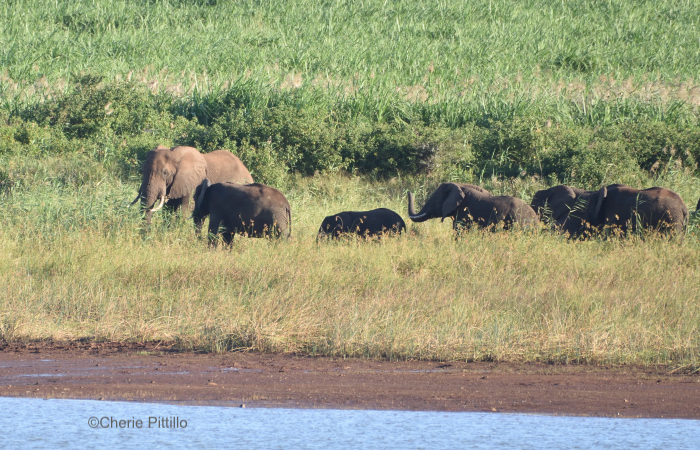
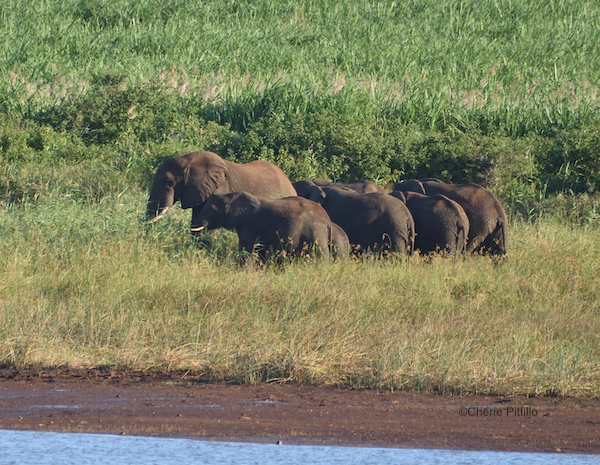
Not only do elephants sniff the air, but as they walk with their heads up, their trunks pick up a variety of scents especially of urine and dung left by other elephants along the trail. This information helps in long distance traveling such as if a water resource was found, and even information about that specific elephant. Scientists theorize scent trails could be removed to create other trails away from human areas or connect closer to protected areas. Another use for the trunk is to test the ground before placing the foot on a downhill slope.
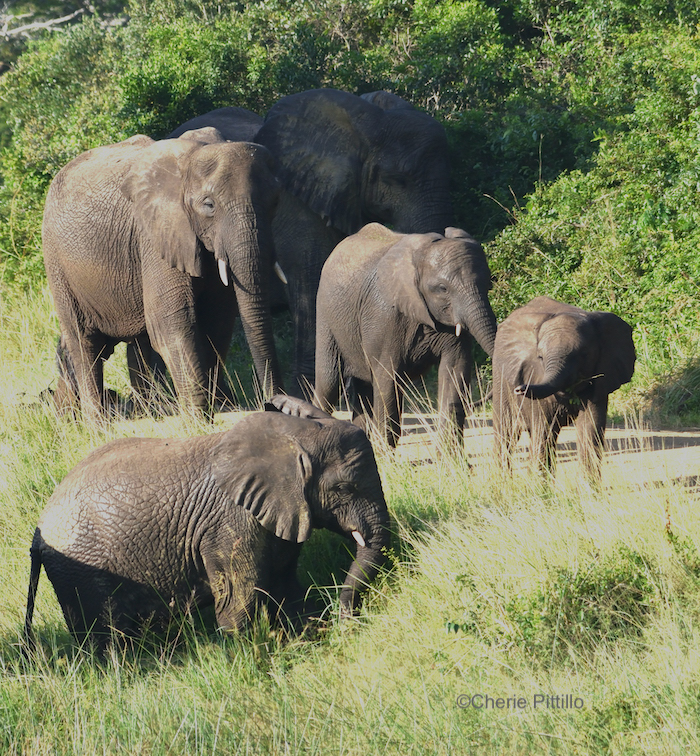
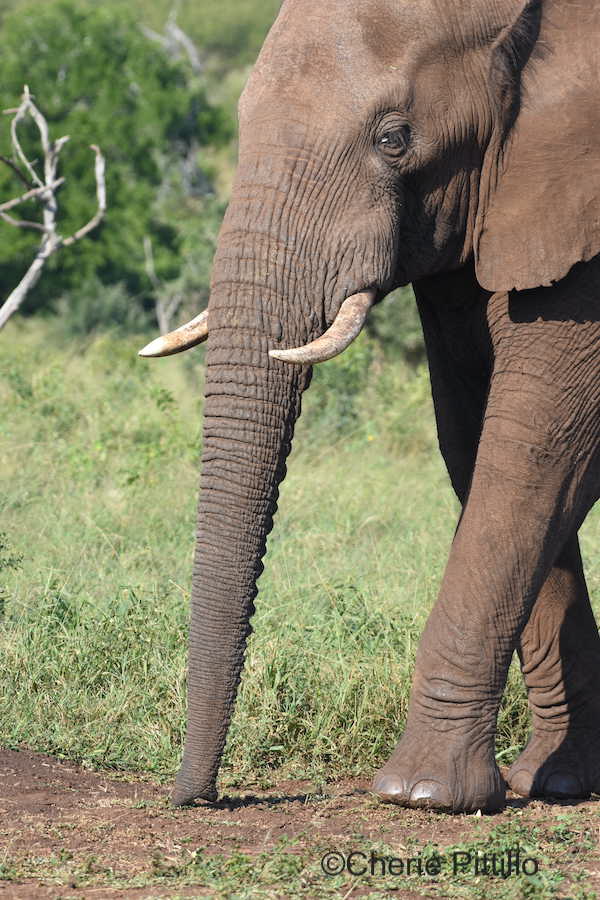
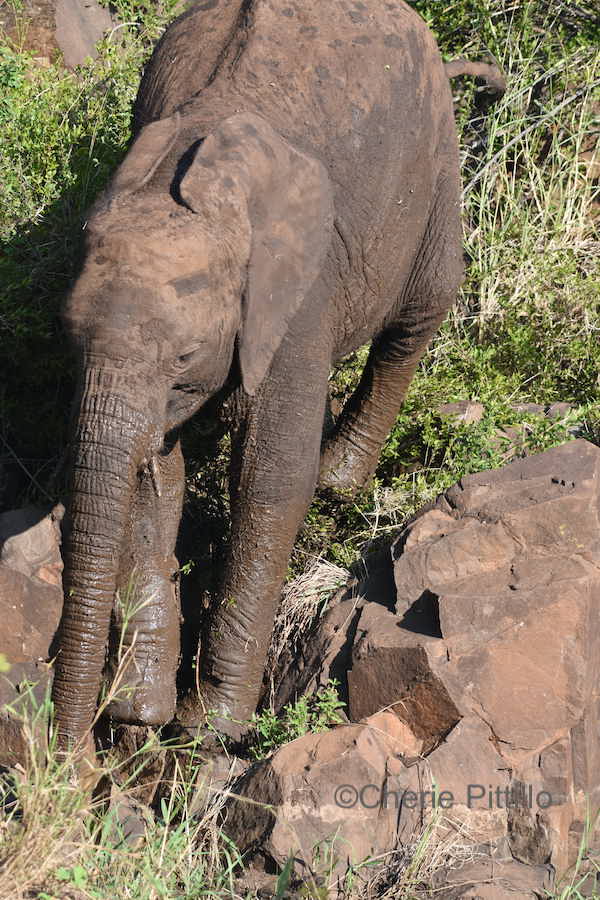
A bull elephant dips his trunk into a urine puddle or dung of a female to check for readiness to mate. He then puts his trunk into the roof of the mouth toward a gland called the Jacobson’s organ to detect hormones.
Studies also confirm part of the trunk can rest on the ground but also it can detect vibrations in the earth from miles away. But I do wonder if that isn’t the most developed sense rather than smell? Anyway, those vibrations originate from elephant rumbles from their larynx. Vibrations are also picked up in their feet from 150 miles away! What good vibrations and not from The Beach Boys!
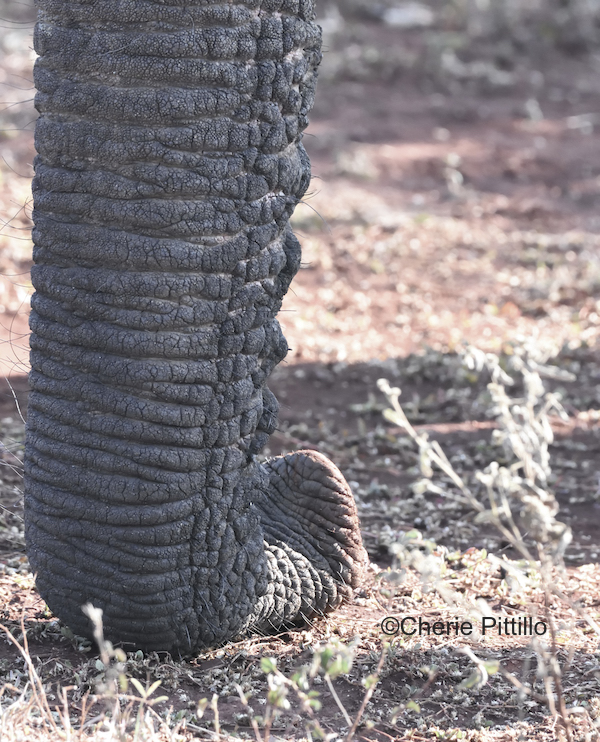
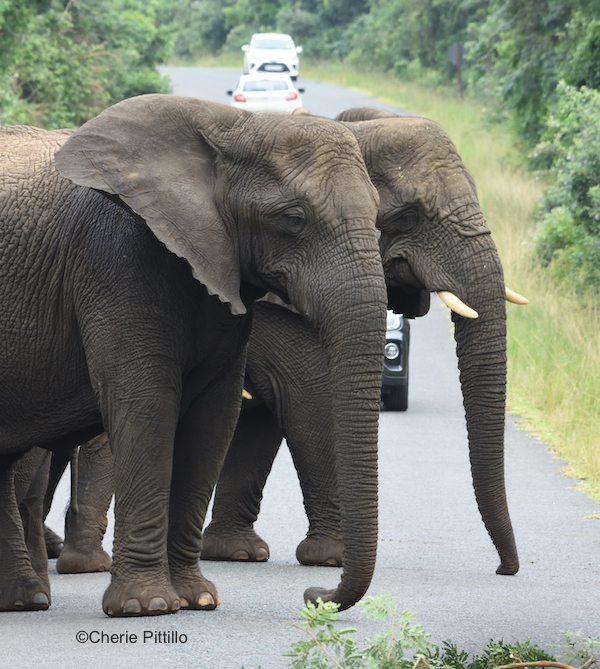
Social bonds are reinforced by the trunks to touch, caress, and smell each other and to me readily appear affectionate. Placing a trunk inside the mouth of another can be a greeting or an invitation to play. Trunks are used to give comfort to calves or each other. And not only does a calf sometimes suck on its trunk like a pacifier, an adult may touch its own face, mouth, ears, and temporal gland for reassurance too. Herd members comfort calves with caressing the back leg, around the belly, over the shoulder, or under the neck. Plus they rub their bodies together too.
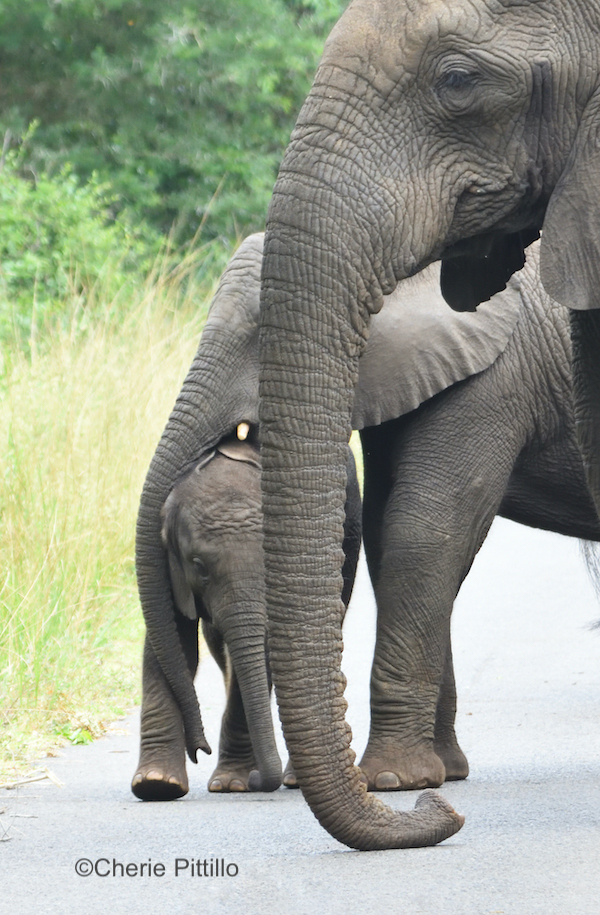
Typically a calf masters the trunk in about a year where at six to eight months it can manipulate the trunk to eat and drink. Plus the calf uses its trunk to learn to identify the smells of different foods from its mother and aunts. And it continues to learn its surroundings or other elephants with the trunk.
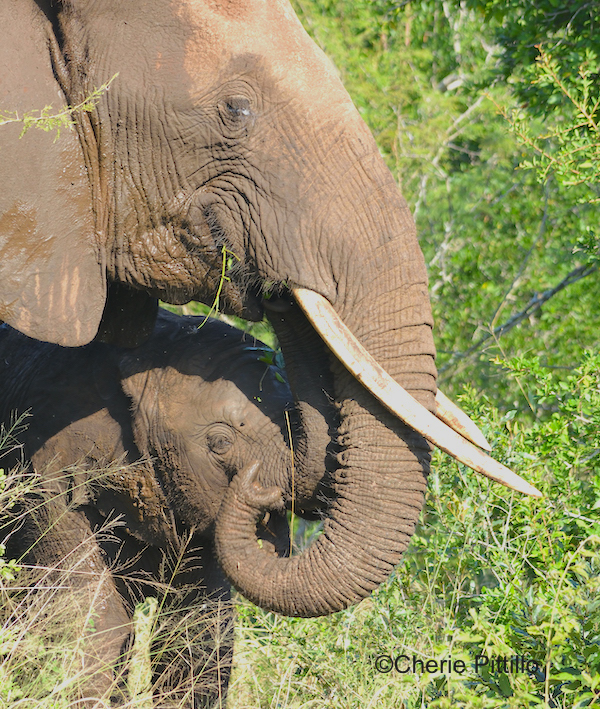

I haven’t mentioned about feeding as we’ve all seen this on tv, but an elephant may be able to reach 20 ft or more to extend the trunk upward and feed higher than a giraffe. So many references suggest a variety of answers about feeding and drinking. Typically an elephant consumes 200-400 pounds in 16 hours or so while on the move and drinks about 59 gallons of water a day.
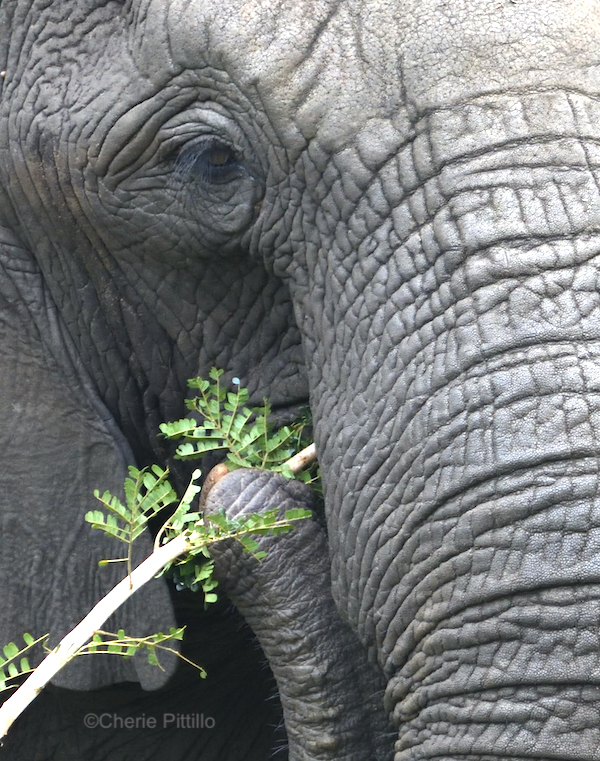
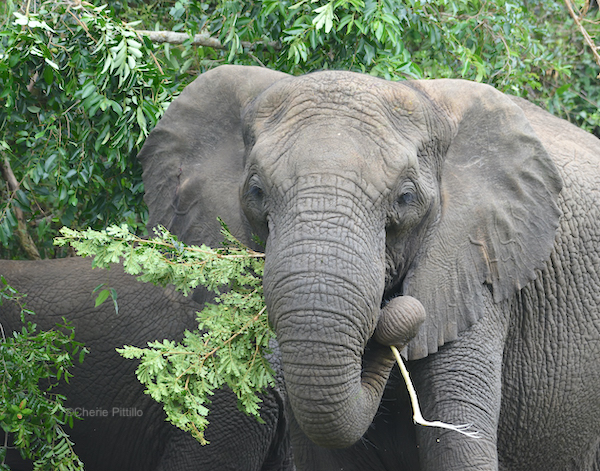
In addition to feeding, elephants play with logs, sticks, or other objects. Others may form a queue to wait to play. This elephant slung grass up and down several times while it walked perhaps to shake off dirt and finally donned it as a cap. She eventually ate it.
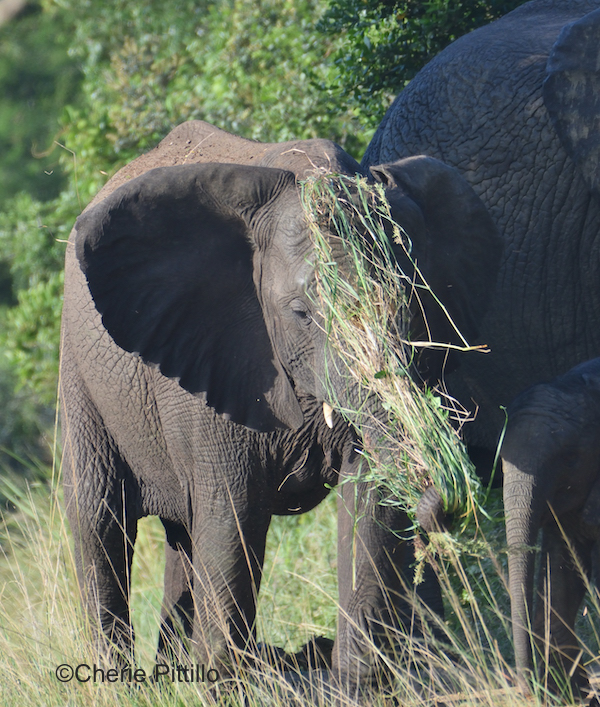
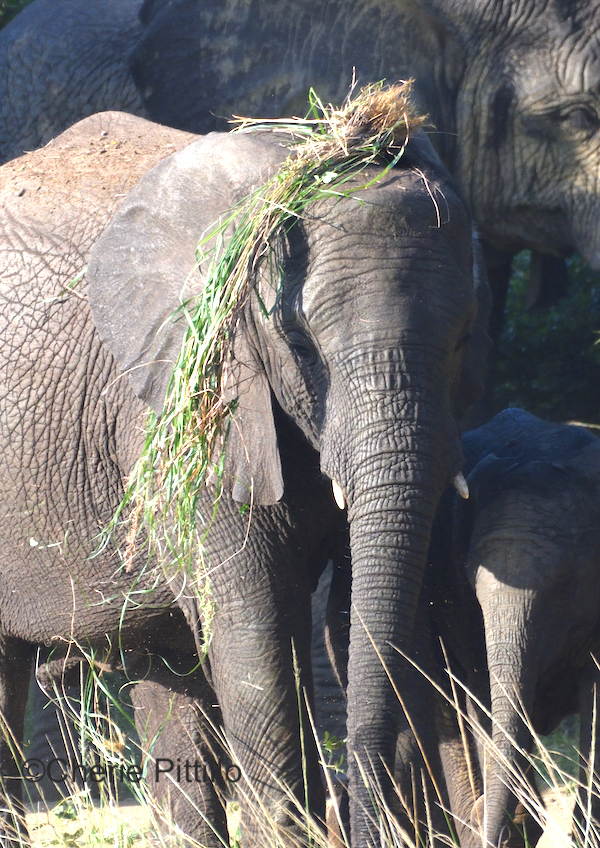
As people, we can be right-handed or left-handed or ambidextrous, and an elephant can favor either the right side or the left side of the trunk. How would a scientist know that? Whiskers! Researchers observed whisker abrasion due to more use on one side of the trunk or the other. Studies indicate that African elephants have more whiskers than their Asian cousins with higher density at the tip. Those tip whiskers are the most sensitive. Some whiskers may actually help keep food or an object centered and balanced on the trunk.
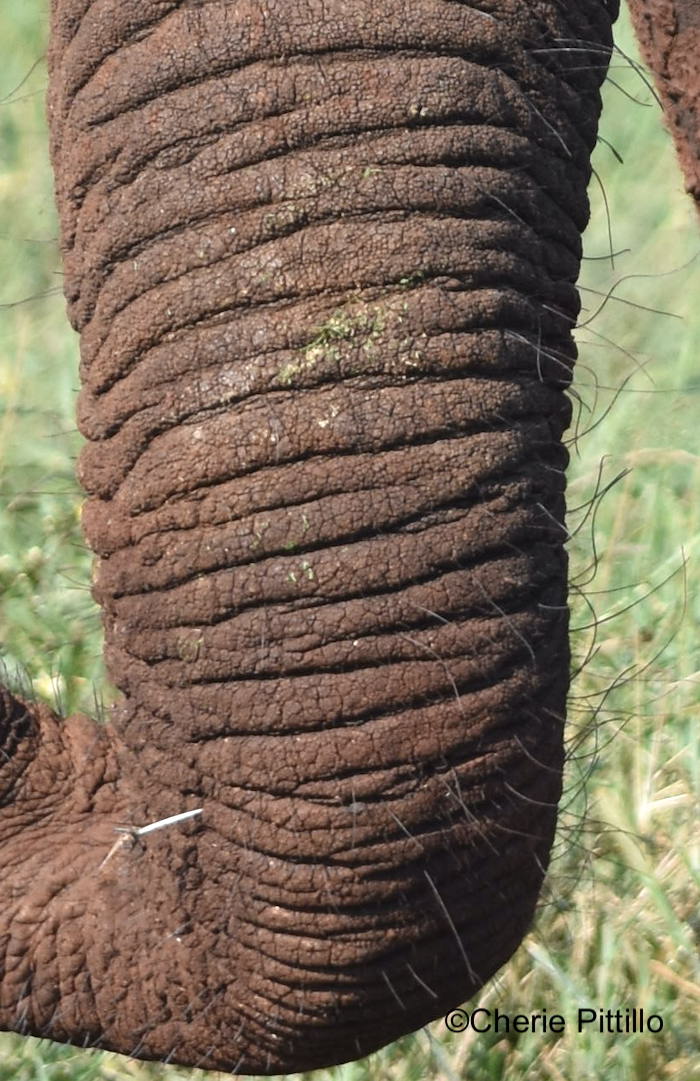
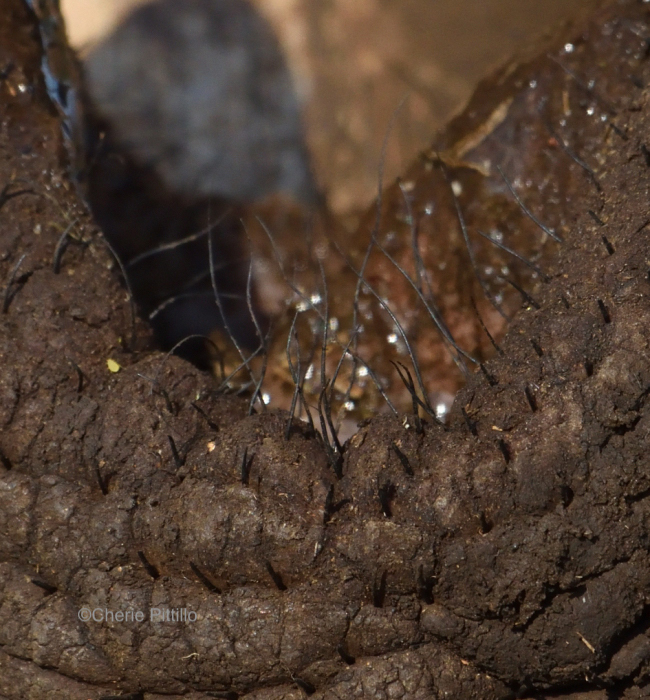
In summary, an elephant’s trunk reminds me of a Leatherman’s or Gerber tool: multi-functional. In Parts 1 and 2, I’ve mentioned the many roles of the trunk in eating, breathing, drinking, smelling, communicating, playing, inspiring robotic creators, spraying mud and dust, and other functions. But I never addressed it as a snorkel, weapon, tree uprooter, and tree shaker. Even the term “elephant trunk” also describes a surgical heart procedure for the aortic arch based on a real elephant’s flexible trunk shape. More studies and research will uncover more facets of this fascinating structure.
UNPACK YOUR STRESSES TO DISCOVER NATURE!
LINK TO PART 1: https://www.theyucatantimes.com/2023/06/backyard-birding-in-merida-yucatan-and-beyond-unpack-your-trunk-african-elephant-part-1-of-2/
DISCLAIMER: As usual, resources/references don’t agree.
National Geographic Documentary: Secrets of the Elephants
https://www.earth.com/news/wild-elephants-track-the-scents-of-others-in-their-path/
https://wwnature.com/how-do-elephants-mate/
https://www.tlc-direct.co.uk/Technical/Sounds/Decibles.htm
https://royalsocietypublishing.org/rsif/doi/10.1098/rsif.2021.0215
https://www.researchgate.net/publication/367252268_Elephant_trunks_use_an_adaptable_prehensile_grip
https://www.researchgate.net/publication/226675507_Assessing_chemical_communication_in_elephants
https://pubmed.ncbi.nlm.nih.gov/34679881/
https://www.researchgate.net/publication/226675507
https://www.asiliaafrica.com/blog/elephant-signals-body-language-within-the-herds/
Cherie Pittillo, “nature inspired,” photographer and author, explores nature everywhere she goes. She’s identified 56 bird species in her Merida, Yucatan backyard view. Her monthly column features anecdotes about birding in Merida, Yucatan and also wildlife beyond the Yucatan.
Contact: [email protected] All rights reserved, ©Cherie Pittillo

